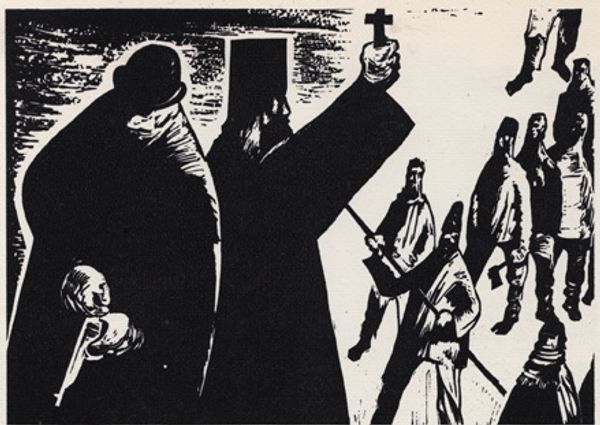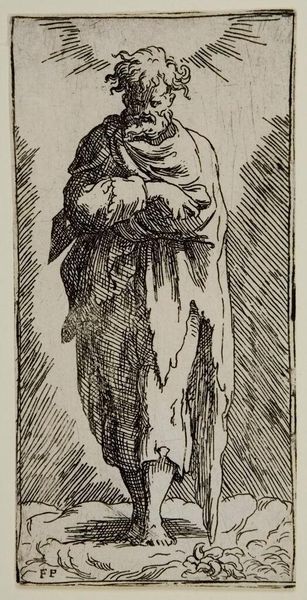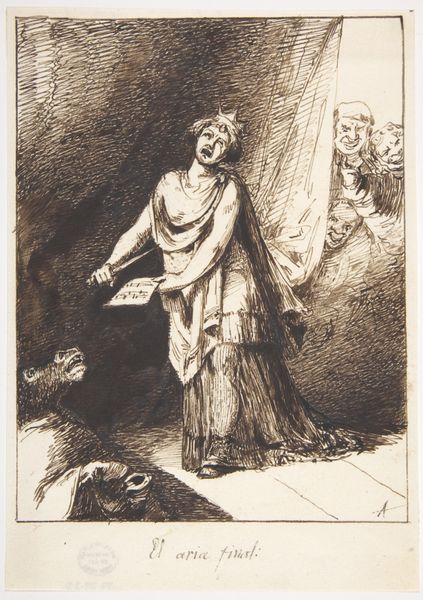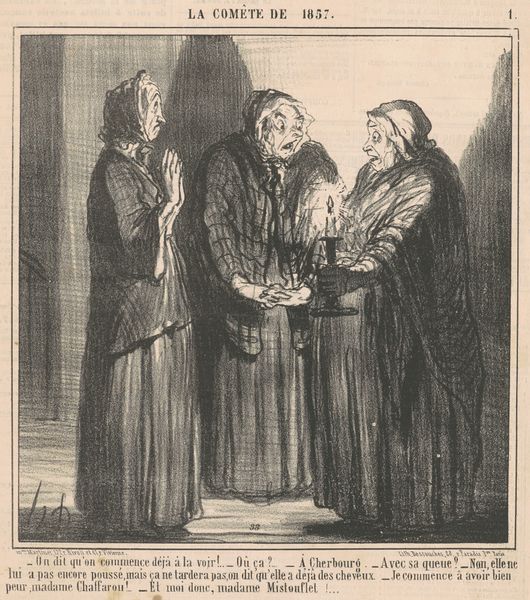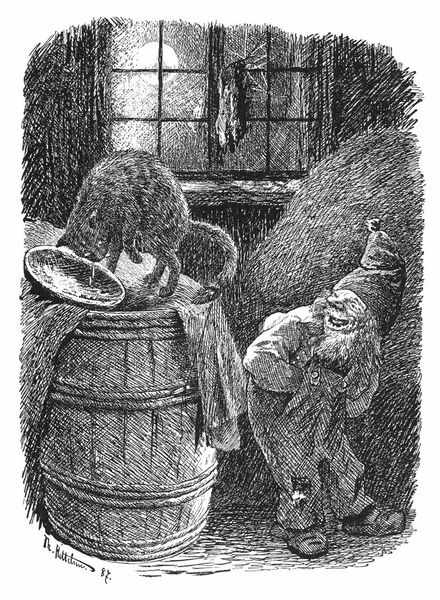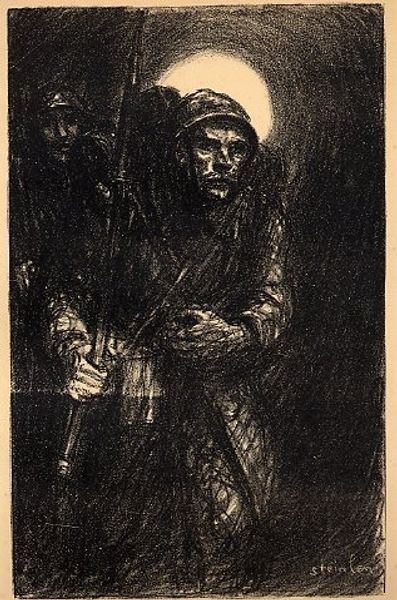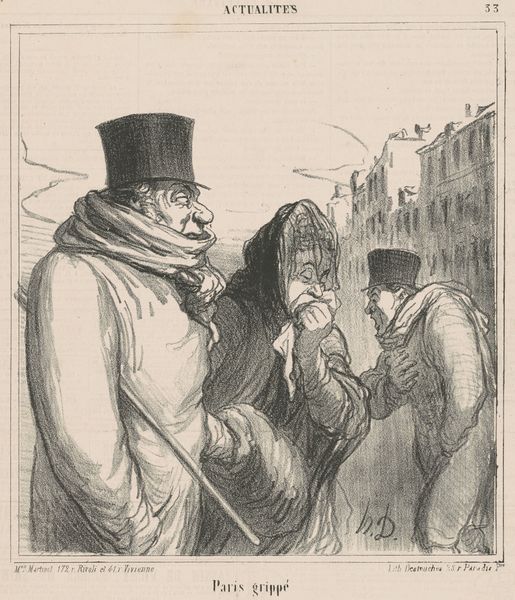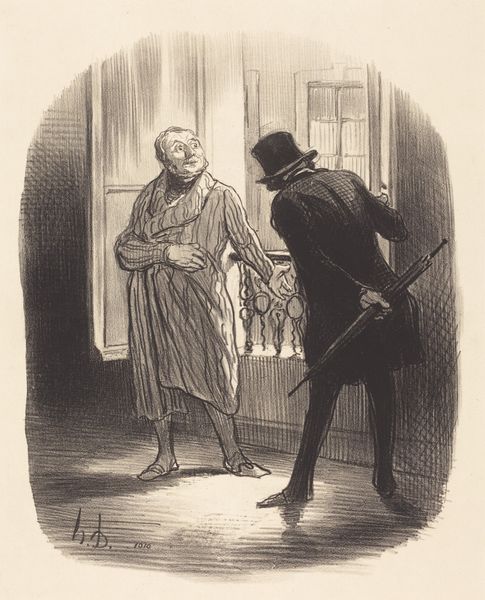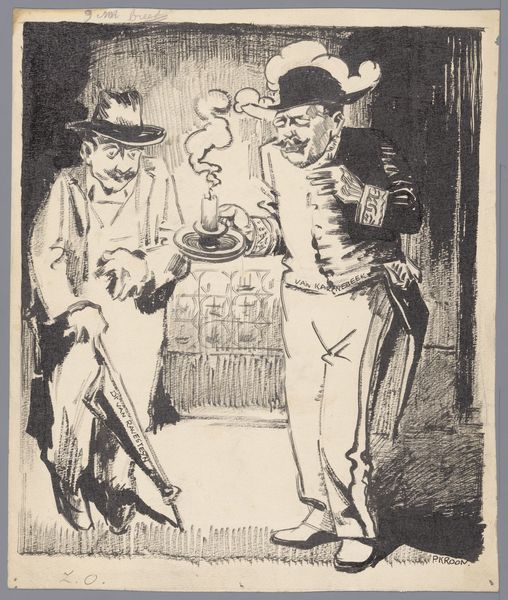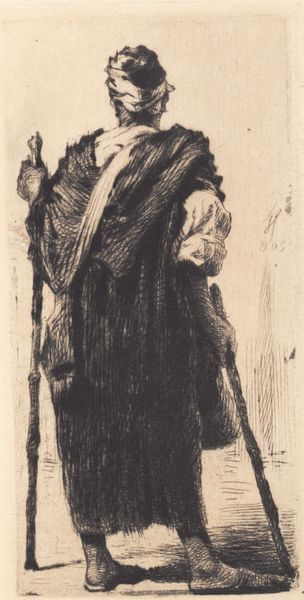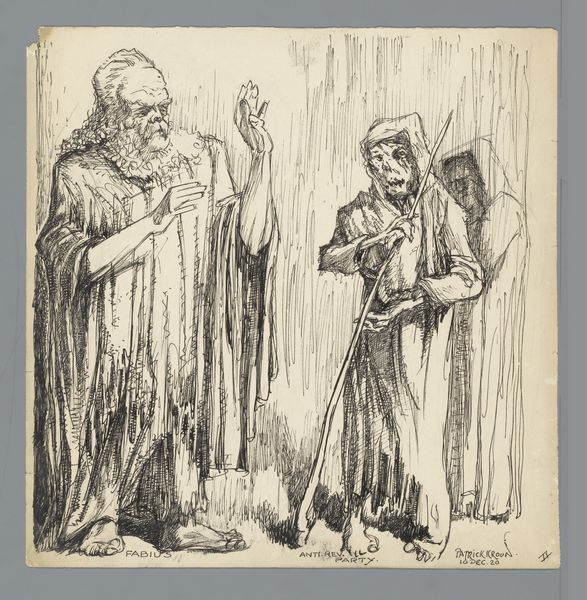
#
amateur sketch
#
ink drawing
#
quirky sketch
#
pen sketch
#
pencil sketch
#
sketchwork
#
ink drawing experimentation
#
pen-ink sketch
#
fantasy sketch
#
initial sketch
Copyright: Public Domain: Artvee
Curator: This drawing, attributed to Arthur Rackham, is called "Candlelight." It's an ink sketch, featuring two figures dramatically lit. The mood is immediately ominous to me. The scratchy, almost frantic linework amplifies a feeling of dread, doesn't it? Editor: Yes, there is something deeply unsettling at play in the lines here. The sharp contrast feels almost theatrical; and how the vertical lines act almost like falling rain. Do you know what material Rackham used, and his methodology? Curator: Well, this is what makes Rackham such a challenging figure. Often viewed through the lens of illustrating Edwardian sensibilities, what often gets sidelined is how those visual cultures enforced hierarchies, excluding diverse narratives. The stark contrast plays with the idea of good and bad as defined in that specific cultural moment. What does this mean about societal perceptions and accessibility of moral codes? Editor: That’s fair, although this level of analysis is beyond the scope for most audio-guides. But it certainly adds to the impact to know Rackham produced the original artwork from his studio, probably using paper made in district mills. Considering how specialized and skillful it took to produce his raw materials and create such bold contrasts—using his own intellectual labour as a way of engaging and interacting with culture through illustrations – is telling. Curator: Absolutely. This artwork can also lead us to thinking about contemporary illustration's role in activism. Do they create new images of community in direct dialogue with existing norms and codes? Does "Candlelight" make room for these crucial questions? Editor: It forces us to consider labor and distribution and production too: the sketch can exist now infinitely through technology which raises questions regarding its material value, particularly against the grain of hand produced work in similar time periods that held intrinsic material value. And the material choices: Ink is simple, almost disposable, easy to move; therefore easily reproduced at that time in periodicals to distribute narrative. Curator: Thank you for engaging and focusing in such a refreshing dialogue, it does raise important points and interpretations about labor. Editor: Likewise, your historical and social observations about visual language will provide fascinating insight for visitors.
Comments
No comments
Be the first to comment and join the conversation on the ultimate creative platform.

